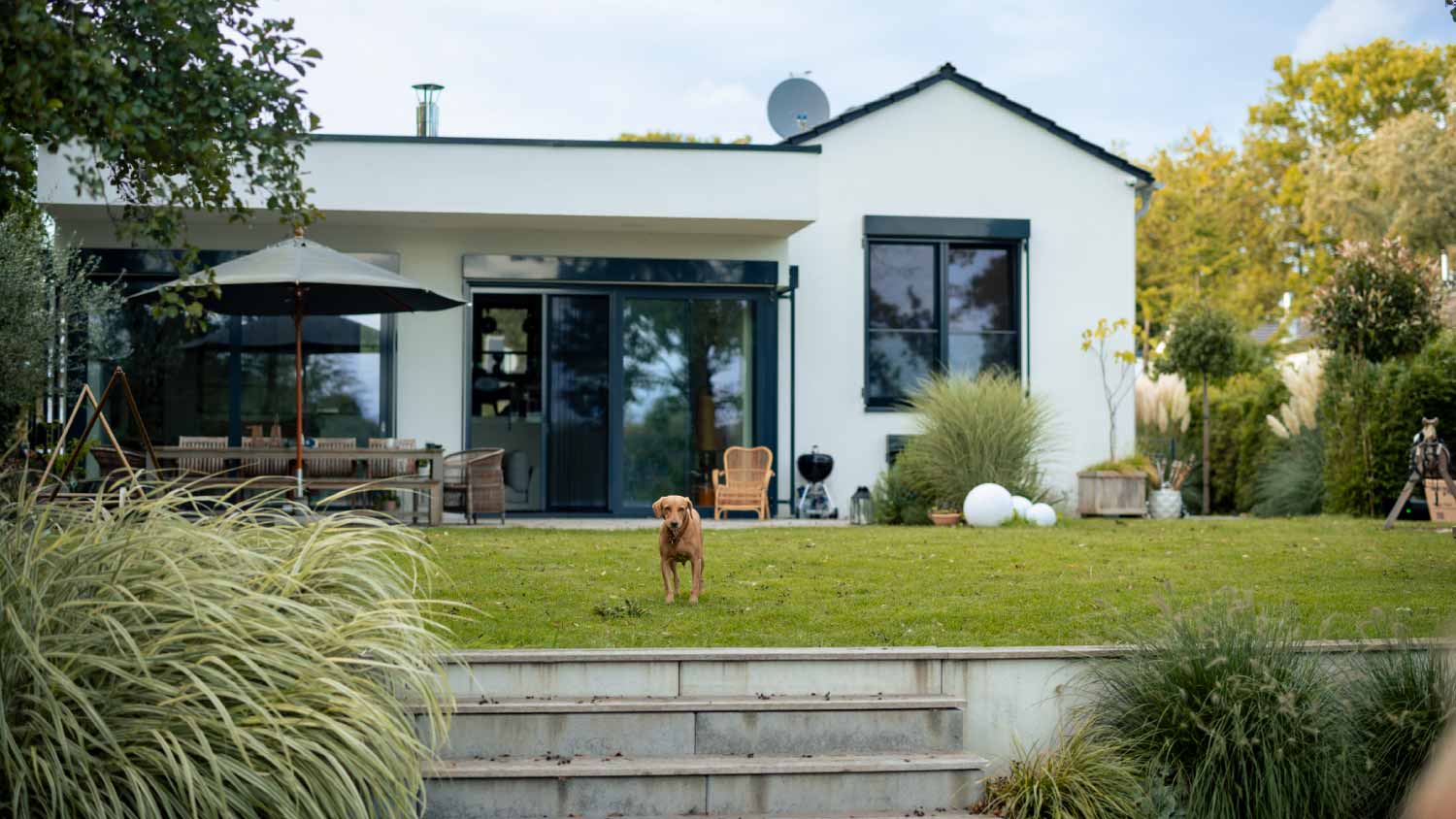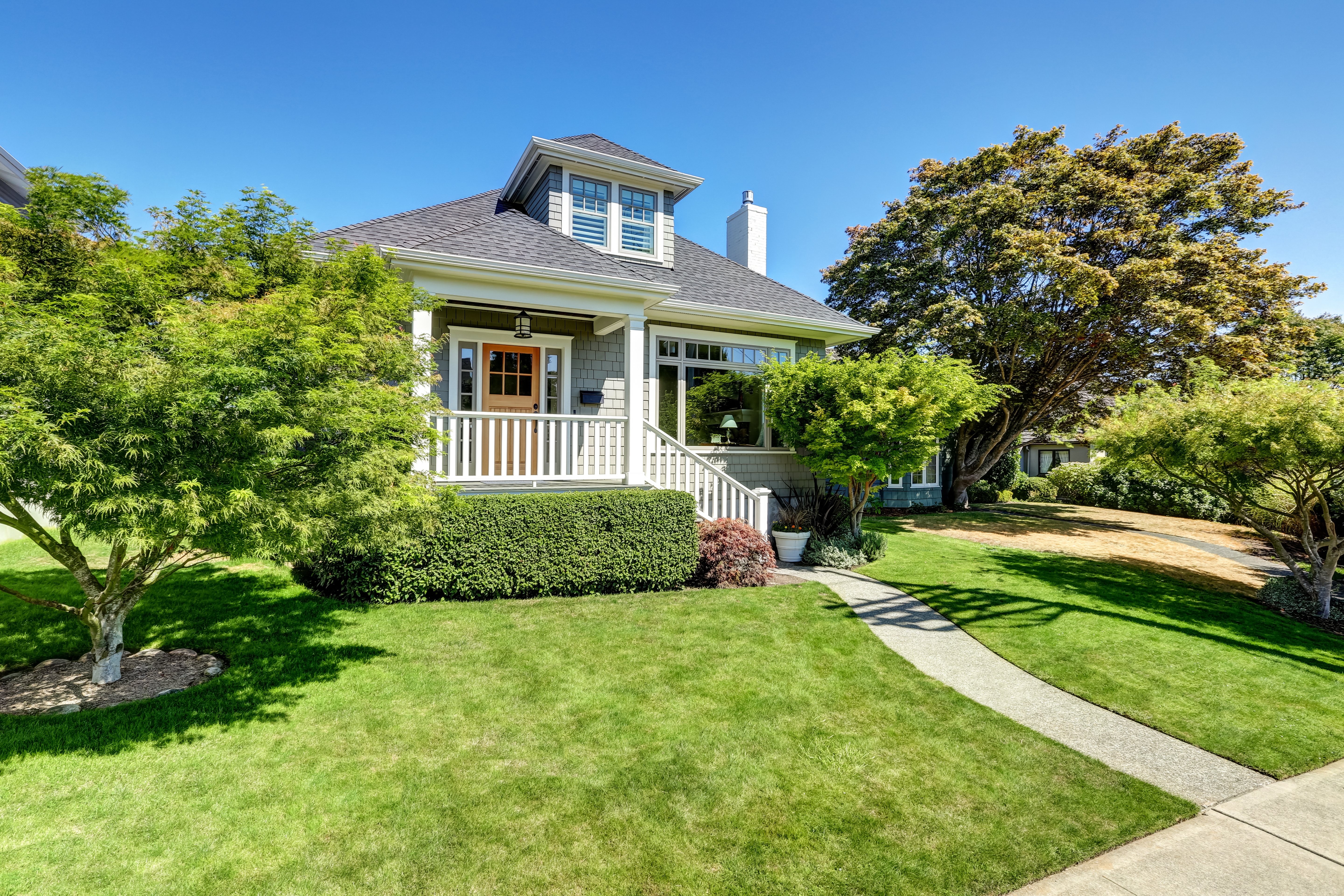
Removing an old lawn is often necessary to plant new grass or build a new outdoor structure. Find out what to budget for your lawn removal cost.
Get rid of unsightly divots and protect your family from tripping hazards


What starts out as a pristine lawn can slowly end up as a crater-filled headache. And it can happen so gradually that you don't even notice until one day you're mowing and suddenly the blade snags on a divot you had no idea was there. This is your sign that it’s time to learn how to fix lawn depressions. Our seven-step guide will show you how.
Before you start fixing lawn depressions, you need to prepare by mowing your grass. You won’t be able to mow again for at least a couple of weeks; you’ll need to allow the soil to settle and new grass seed to sprout first.
Aerating your lawn is the next step you’ll need to take to prepare it for fixing depressions and reseeding. Aeration allows for good drainage and promotes the healthy growth of new grass. Use a spike aerator, plug/core aerator, or liquid aerator to get the job done.
Buy topsoil that's screened and free of weeds so you don't introduce new problems to your lawn. Use this topsoil to overfill any depressions with a shovel. Rake the soil across the depressions, but be sure to leave a little extra soil on top, as the topsoil will sink as it settles. Aim to build up the topsoil 2 to 3 inches above the yard line.
Walk over the area or use a tamper tool if you have one to gently compact the soil.
If you want to grow healthy grass, the top layer of soil should stay loose to allow easy root growth. After compacting the area, add about three inches of new topsoil above the yard line. Don’t compact this top layer; it will settle after a week or two.
Water freshly filled depressions with a sprinkler to help the topsoil settle and to remove air pockets.
Watering also helps encourage nutrients from your old soil to mix with the new soil. If the topsoil immediately settles below the level of the rest of the lawn, add more topsoil.

Leave the bare patch for two weeks to let it settle fully. If it's still level with the rest of the lawn after that time, you can apply grass seed using a spreader. Otherwise, you will need to repeat the process until the soil is even with the rest of the yard.
If you have only a few lawn depressions to fix, then doing it yourself is possible. It will be less expensive if you already have most of the supplies you need. However, for really deep depressions, or if your yard has steep slopes that need attention, you should hire a professional lawn specialist near you to do the job.
Renting equipment to do it yourself can get expensive, and the job can become very labor-intensive depending on the number of lawn depressions you have. Plus, if you aren’t experienced with this type of work, you could accidentally create a lawn grading problem or other issue that will end up requiring a pro to fix.
Allie Ogletree contributed to this piece.
From average costs to expert advice, get all the answers you need to get your job done.

Removing an old lawn is often necessary to plant new grass or build a new outdoor structure. Find out what to budget for your lawn removal cost.

The cost to renovate your lawn depends on the extent of the damage. Our guide will show you how much lawn renovation costs.

How much it costs to rent a lawn aerator depends on what kind you rent and how long you rent it for. Read on for the full details.

Learn how to grow grass fast to get the lush lawn of your dreams. From the best time to plant to choosing the right seed, here’s the quickest way to grow grass.

No one wants to kick back on a hard and dry patch of dirt at the end of the day. Here's how to fix overly dry dirt in your lawn in seven simple steps.

What is hydroseeding? Our guide explains how this landscaping technique can give you a beautiful green lawn in just weeks.